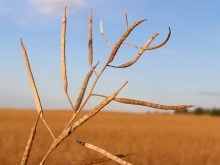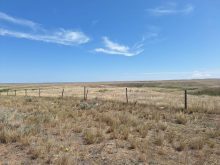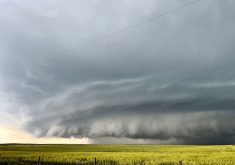CHICAGO, Ill. — Forecasters thought La Nina would be the major weather factor in 2017, but its looking more like La Nada, says Bryce Anderson, DTN’s senior agricultural meteorologist.
The Australian Bureau of Meteorology says the likelihood of a La Nina developing is now low. That viewpoint is shared by the U.S. National Weather Service’s Climate Prediction Center, which is forecasting neutral conditions from January through March.
That opens the door for what Anderson calls the B-team of weather influencers: the Pacific Decadal Oscillation (PDO) and Atlantic Multidecadal Oscillation (AMO).
Read Also

Fuel rebate rule change will affect taxes and AgriStability
The federal government recently announced updates to the fuel rebates that farmers have been receiving since 2019-20.
The PDO switched to a negative value in the fall of 2016, while the AMO has been positive since 1998.
That combination of a negative PDO and positive AMO results in a tendency for drier conditions over much of the U.S. grain belt during the summer.
Anderson told delegates attending the 2016 DTN Ag Summit that it is more of a cautionary note than a forecast.
He believes it will be drier than normal starting in Missouri and Illinois and heading south into the U.S. Delta and the southeastern United States.
“I don’t think we’re going to have a big problem. I think trend line yields are certainly achievable,” said Anderson.
However, there will be times throughout the late spring and early summer when markets become nervous enough about conditions that they will cause price rallies.
Anderson is forecasting a cold winter in the Canadian Prairies as well as the U.S. northern Plains and corn belt. That is because a large area of high pressure has set up over Alaska and north into the Bering Sea, which is blocking the westerly flow of Pacific Ocean air into North America and opening the door for Arctic air to descend south.
It means there could be a slow start to spring fieldwork if the cold conditions persist. He is also forecasting a stormy and wet spring for the U.S. and Western Canada.
“We’re going to start out with a wetter scenario in the (Canadian) Prairies than we’d like to see,” Anderson said in an interview following his presentation.
The slow start to the season could make markets antsy, resulting in a spring price rally.
Anderson believes temperatures will be below normal this spring and summer in Western Canada as ample soil moisture reserves act as a thermostat, keeping the hot weather at bay.
It is drier south of the border, where 57 percent of the U.S. is experiencing some level of drought compared to 37 percent at the same time last year.
There have been flash droughts in the southeastern U.S., where parts of Georgia, Alabama and Carolina have gone from no drought to exceptional drought in three months.
“This is how fast dryness can develop,” said Anderson.
There should be ample precipitation throughout much of the U.S. grain growing region in the spring and warm temperatures in the northeast corn belt, delta region and southeast.
Summer should be warmer for much of the crop growing region, and there will be less than normal precipitation in the central and southern regions.
“There is a little caution in the way the situation is shaping up right now,” he said.
Brazil is starting this crop season in much better shape than a year ago, with very few dry areas. Planting has been earlier than normal, which means the second corn crop will get in the ground earlier.
It has been dry in western and southern Argentina, but moisture is adequate to surplus in central regions. Anderson sees no cause for concern.
The winter wheat crop is off to a good start in the Black Sea region, where there is favourable soil moisture reserves throughout much of the area.
Soil moisture is also looking good in the major soybean and wheat growing regions of China.
Contact sean.pratt@producer.com
















